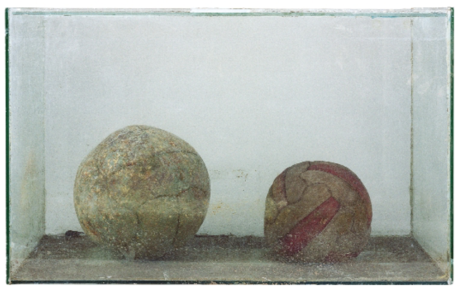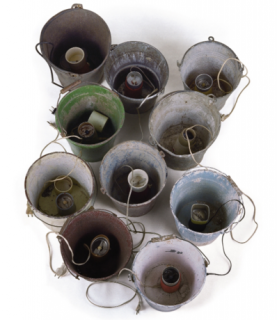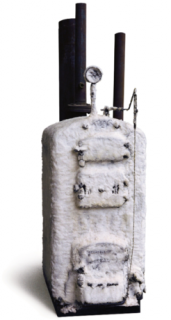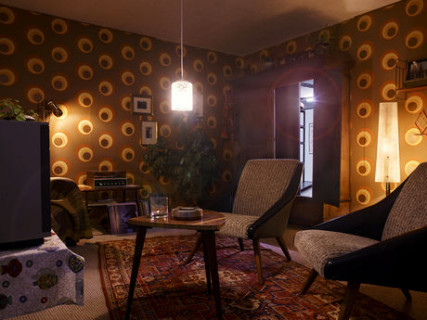Whatever is possible, convinces. Whatever convinces, is impossible.
(Kurt Helm)
It is a preeminent collection of the art of the twentieth century—perhaps the only one. From Marcel Duchamp to Andreas Baader and Jeff Koons, it covers almost a hundred years of cultural history, an era that has become strange to us. …
And so the exhibition at KOW is first and foremost a tribute to the life’s work of Ramon Haze. He compiled the items on display and reconstructed their forgotten meaning. His art collection—“The Cabinet”—traces several key episodes in the past evolution of art and is now regarded as the single most important source helping us to understand it. …
So what is important, what is true, and what is not? And why?
Was FERDINAND PORSCHE’S original VW Beetle, designed in 1934, art? What about RUTH TAUER’S tiles? And the sugar furnaces of PIPPIP, who was born in Chicago in 1890 and worked as a stoker on a cargo steamer? What sets the Colombian GALLARDO JUAN IBANEZ’S playpen apart from an identical playpen by the Russian ILYA KABAKOV (salvaged by Feldmann and Grahl from Kabakov’s installation “Voices behind the Door,” which was shown in Leipzig in 1996 and then scrapped)? And why did art historians for decades draw a veil of silence over EDWARD BARANOW-KNEPP’S “Machine for Changing the World for the Better,” which was probably completed as early as the 1930s? Who might be able to answer all these questions? Feldmann, Grahl, and Haze write their own version of art history at a time when the Western sense of inevitability muffles all life in the East—and play a trick on the new hegemonic style.
By sheer luck, we have a video recording of a guided tour of the collection. It documents the remarkable precision and attention to detail with which the pedagogical staff showing the cabinet conveyed Ramon Haze’s artful account of the past and pinpointed the change of values in the years after German reunification. …
From 1996 until 1999, the art collection “Der Schrank von Ramon Haze” was probably one of the most original and substantial creative responses to the post-socialist transformation, to the revision of (art-)historical narratives and the new acquisitions policies of public museums. The latter, it should be noted, have so far not deigned to include the Cabinet in their presentations. Haze’s collection has fallen into oblivion, as has the twentieth century as a cultural era in the account it gave of itself.
VIDEO OF THE GUIDED TOUR: Katharina Schmalenberg, Christopher Novak, Henning Vogt
KOW
Brunnenstr.9, 10119 Berlin
OPEN WED-SUN 10-6 pm
Gallery …





